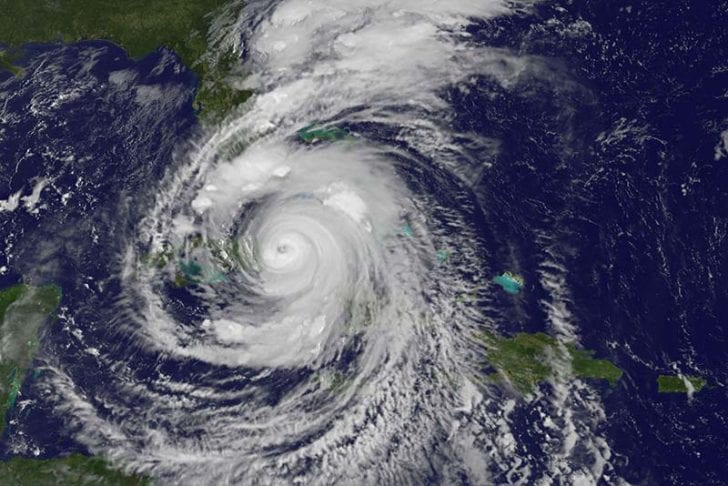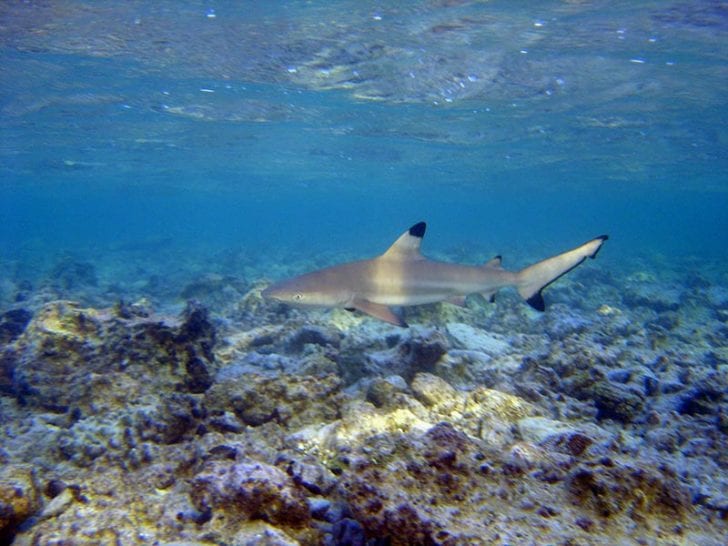
As Florida and the Caribbean continues to recover from Hurricane Irma, those of us whose livelihoods either depend on fishing or simply work to support a fishing habit, are probably wondering how natural disasters impact fish. Here’s an interesting perspective from TheFisheriesblog.com on the impacts of hurricanes upon fish.
Studying fish responses to hurricanes can be difficult. Hurricanes are relatively rare events that come with little warning and unpredictable storm paths (as many along the Atlantic and Gulf coasts are all too familiar with). Destructive winds and storm surge during a hurricane can damage or destroy the equipment and infrastructure (for example, field stations) biologists need to study fish populations and prevent field observations for days or weeks after a storm has passed. These challenges make it difficult to design controlled studies aimed at understanding hurricane effects on fish. Most of the information we have on fish responses to hurricanes comes from either long-term monitoring studies or short-term research projects that had the unfortunate luck of being interrupted by a hurricane. Despite these limitations, findings from studies such as these can shed light on what happens below the water’s surface following a hurricane.

In the open ocean, hurricanes can alter ocean productivity, leading to an increase in food availability for some fishes. Using data from a series of repeatedly sampled cruise transects in the Pacific Ocean off southwest Mexico, researchers at NOAA found that tropical storm cyclonic activity increased the upwelling of deep, nutrient-rich ocean waters. These nutrients fueled blooms of algae and zooplankton (microscopic animal life that feed on algae) which persisted for up four weeks. In turn, gut content fullness (an indicator of feeding success) of planktivorous flying fish doubled in an area that had been affected by a tropical cyclone.
Prior to hurricane landfall, some larger fishes may evacuate coastal bays and estuaries areas ahead of the storm. In September 2001, as Tropical Storm Gabrielle approached Tampa, FL juvenile blacktip sharks that had been marked with acoustic tags left their shallow nursery habitat in Terra Ceia Bay, Florida and moved to deeper water. Researchers hypothesized this movement was triggered by falling barometric pressure ahead of the storm and may represent an innate behavior to avoid dangerous conditions.
After a hurricane makes landfall, excess water either in the form of storm surges or flooding is typically the most destructive force acting on coastal communities and cities. For fish as well, both storm surge (an influx of salty ocean water) and freshwater flooding may pose challenges. Although fish that live in estuaries are adapted to deal with fluctuating salinity levels, hurricanes can dramatically alter salinity levels in estuarine waters leading to substantial changes in fish communities. In the tidal freshwater habitats of Louisiana’s Breton Sound estuary, storm surges from Hurricane Katrina in 2005 caused salinity to be elevated above normal levels for 6 months following the storm. In response, fish communities in the freshwater habitats of Breton Sound estuary shifted from being dominated by freshwater species (e.g., mosquitofish, bluegill, spotted sunfish) to one containing mostly brackish or marine species (inland silverside, clown goby, Atlantic croaker, Gulf menhaden). It was not until a full year after the storm that the Breton Sound fish community returned to its pre-storm, freshwater community composition.
Flooding can also have multiple effects on fish. When rivers top their natural banks or man-made levies, riverine fish may gain access to beneficial floodplain habitats that may be used for feeding or reproduction. Floods also allow fish to move between previously disconnected systems (such as oxbow lakes and river channels). Additionally, high flow events associated with hurricane-induced rain events can act as a cue, signaling fish to initiate spawning migrations.
Excessive rainfall during hurricanes can also cause another problem: hypoxia (aka “dead zones”). This occurs when excessive rainfall washes off high levels of organic materials into rivers and estuaries. These organic materials can come from natural sources (plant material or the organic matter in soils) or from human activities affected by flooding (overflows of wastewater treatment plants, excessive run-off from animal waste facilities, and inundation of agricultural croplands). When excess organic materials enter and accumulate in aquatic systems, the biological break down of these materials can consume nearly all of the available dissolved in aquatic systems, leading to hypoxic conditions. Fish, like other vertebrates, require oxygen to meet their basic metabolic demands. However, instead of breathing air to acquire oxygen, fish absorb dissolved oxygen from water as it passes over their gills. When dissolved oxygen levels in aquatic systems plummet rapidly, fish kills can occur.
Even though hurricanes may cause changes in fish behavior, alter estuarine fish distributions, or cause fish kills, most coastal fish species and populations are likely resilient to Hurricane-related disturbances, as they have occurred for millennia in coastal ecosystems. However, the frequency and intensity of hurricanes is predicted to increase with continue climate change. When disturbances from hurricanes are considered along with other human-driven stressors (such as habitat loss, overfishing, invasive species and others), the combination of these stressors and disturbances may push some species towards the brink.
The Fisheries Blog was started in 2011 by a group of scientists who are professional fisheries scientists by day and communicators of scientific information by night. On The Fisheries Blog, we write popular articles and other short fisheries-related stories that are often inspired by the interesting topics that we hear about during the day.
Related articles:




